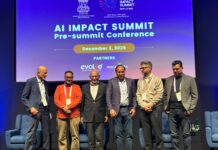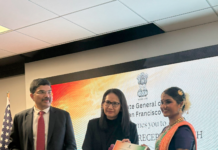Vidya Sethuraman
India Post News Service
The United States has long been a global leader in innovation, setting the pace for technological advancements that drive the international economy. Careers in science, technology, engineering, and mathematics are among the highest-paying jobs in the US. Workers in these fields earn over $100,000 a year, in comparison to the national wage average of $46,000.
The US is the world’s leader in research and development, but faces a critical shortage in its homegrown workforce. Roughly 43% of STEM workers in the US are from abroad. The gaps are critical for students of color and girls as well as low income children. For the United States, this means fostering a diverse and highly skilled workforce capable of driving the next wave of breakthroughs. Speakers at the EMS briefing discussed novel initiatives to engage kids in STEM occupations, as well as some of the barriers in classrooms.
Growth in STEM jobs over the next decade is projected to significantly outpace the growth of non-STEM jobs. In fact, employment in STEM occupations is expected to increase by almost 11 percent, compared to a projected 2.3 percent change in non-STEM occupations. To meet that demand, U.S. policymakers should significantly strengthen the county’s STEM talent pipelines over the next decade.
Dr. Louis Freedberg, interim CEO of EdSource pointed out that the growth rate of STEM occupations in the next ten years is expected to be twice that of other jobs, so how to ensure that all students in the current public school system have access to these careers is critical.
Freedberg believes that an important reason why African-American, Hispanic, indigenous and low-income students are underrepresented in STEM industries is that their families cannot provide relevant support and environment, such as participating in summer programs focused on science. And early identification of an interest in math and science is a key indicator of students pursuing STEM careers. In addition, it is also necessary for students to understand STEM courses and the connection between learning content and careers, not just abstract things.
Dr. Yasemin Copur-Gencturk, Associate Professor of Teacher Education, University of Southern California pointed out that stereotypes based on gender and race are deeply rooted in society, leading people to believe that certain gender and racial groups have higher math proficiency than others.
Therefore, raising awareness of invisible bias is the first step in combating it. Second, teachers and educators need to give struggling students a chance. Finally, targeted interventions need to be developed to help teachers overcome implicit bias in mathematics classrooms, with general bias training insufficient to address specific issues in subjects such as mathematics.
Also Read: The Benefits of Implementing a Kanban Inventory System







